The University of Puerto Rico (UPR) is the main public university system of Puerto Rico and a government-owned corporation of Puerto Rico. It consists of 11 campuses and has approximately 58,000 students and 5,300 faculty members. [1] UPR has the largest and most diverse academic offerings in Puerto Rico and the Caribbean, with 472 academic programs of which 32 lead to a doctorate. [2]
| Campus | City | Year established | Enrollment |
|---|---|---|---|
| University of Puerto Rico, Medical Sciences Campus | San Juan | 1966 | 2,657 |
| University of Puerto Rico at Aguadilla | Aguadilla | 1972 | 2,973 |
| University of Puerto Rico at Arecibo | Arecibo | 1967 | 3,757 |
| University of Puerto Rico at Bayamón | Bayamón | 1971 | 5,075 |
| University of Puerto Rico at Carolina | Carolina | 1974 | 3,994 |
| University of Puerto Rico at Cayey | Cayey | 1967 | 3,817 |
| University of Puerto Rico at Humacao | Humacao | 1962 | 3,495 |
| University of Puerto Rico at Mayagüez | Mayagüez | 1911 | 11,838 |
| University of Puerto Rico at Ponce | Ponce | 1970 | 3,120 |
| University of Puerto Rico at Río Piedras | San Juan | 1903 | 15,441 |
| University of Puerto Rico at Utuado | Utuado | 1979 | 1,559 |

The University of Puerto Rico is the main public university system in the U.S. Commonwealth of Puerto Rico. It is a government-owned corporation with 11 campuses and approximately 58,000 students and 5,300 faculty members. UPR has the largest and most diverse academic offerings in the commonwealth, with 472 academic programs of which 32 lead to a doctorate.

The University of Puerto Rico, Mayagüez Campus (UPRM) or Recinto Universitario de Mayagüez (RUM) in Spanish, is a public land-grant university in Mayagüez, Puerto Rico. UPRM is the second-largest university campus of the University of Puerto Rico system. In addition to its status as a land-grant university, it is also a member of the sea-grant and space-grant research consortia. In 2009, the campus population was composed of 12,108 students, 1,924 regular staff members, and 1,037 members of the education staff. In 2013, the student population remained relatively steady at 11,838, but the instructional faculty dropped to 684. In the second semester of 2019 around 12,166 students where enrolled. UPRM has been accredited by the Middle States Commission on Higher Education (MSCHE) since 1946.

The University of Puerto Rico, Río Piedras Campus is a public land-grant research university in San Juan, Puerto Rico. It is the largest campus in the University of Puerto Rico system in terms of student population and it was Puerto Rico's first public university campus.
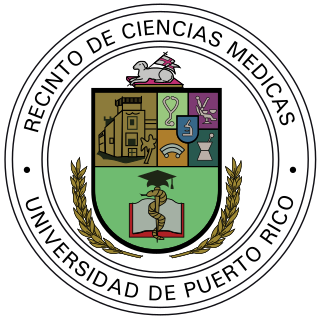
The University of Puerto Rico, Medical Sciences Campus — Universidad de Puerto Rico, Recinto de Ciencias Médicas (UPR-RCM) in Spanish— is a public health sciences-oriented university in San Juan, Puerto Rico. It is part of the University of Puerto Rico System and is located on the grounds of the Puerto Rico Medical Center.
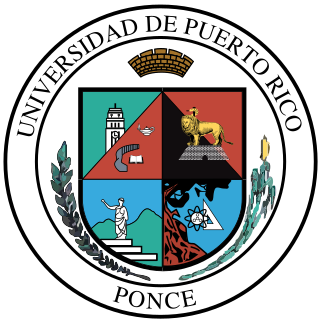
The University of Puerto Rico at Ponce is a public college in Ponce, Puerto Rico. It is the only campus of the University of Puerto Rico on the southern region of the island.
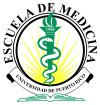
The University of Puerto Rico, Medical Sciences Campus, School of Medicine is located in the University of Puerto Rico, Medical Sciences Campus in San Juan, Puerto Rico. It's the only medical school in the University of Puerto Rico System. It is accredited by the Liaison Committee on Medical Education (LCME). Its students are predominantly Puerto Rican residents. However, anyone is allowed to apply to this university. It is also considered the top bilingual medical school in the world due to its requirement for each admitted student to fully master both English and Spanish.

Río Piedras is a populous district of San Juan, and former town and municipality of Puerto Rico, which was merged with the municipality of San Juan in 1951. The district today is composed of various barrios such as Pueblo and Universidad. The historic town was founded in 1714 as El Roble, it was given municipality rights in 1823, and since 1903 it has been the home of the University of Puerto Rico's main campus, earning the popular name of Ciudad Universitaria today. The downtown and historic center of Río Piedras is officially known as the Pueblo barrio of the municipality of San Juan.

Jaime Benítez Rexach was a Puerto Rican author, academic and politician. He was the longest serving chancellor and the first president of the University of Puerto Rico.
Antonia Martínez Lagares was a 20-year-old student at the University of Puerto Rico at Río Piedras who was shot and killed by a policeman as she criticized the police violence while watching the 1970 anti-Vietnam War and Education Reform student protests at the University of Puerto Rico. She became a symbol against oppression, intolerance and US imperialism in post-Ponce massacre Puerto Rico. Martínez was from Arecibo, Puerto Rico.
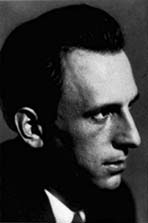
Heinrich Klumb was a German architect who worked in Puerto Rico during the mid 20th Century.
The Puerto Rico Statehood Students Association (PRSSA) —Spanish: Asociación de Estudiantes Estadistas de Puerto Rico— is a Puerto Rican non-profit student organization dedicated to promoting statehood for Puerto Rico. It was founded in 1979, and remained active for two years, becoming inactive 1981–1993, active again 1993 to 1997, inactive once more 1997 to 2007, when it was reactivated once again.
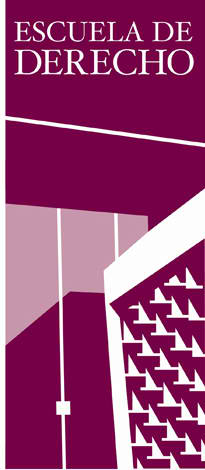
The University of Puerto Rico School of Law is a law school in Puerto Rico. It is one of the professional graduate schools of University of Puerto Rico, Río Piedras Campus and the only law school in the University of Puerto Rico System. It was founded in 1913 at its present site in Río Piedras, which at the time was an independent municipality and is now part of the City of San Juan. The School of Law has been accredited by the American Bar Association since 1945 and by the Association of American Law Schools since 1948.

Hato Rey Sur is one of the 18 barrios of the municipality of San Juan, Puerto Rico. Hato Rey Sur was a barrio of the former municipality of Rio Piedras, before it was merged with the municipality of San Juan in 1951. Following the annexation of Rio Piedras, the city of San Juan, and its surrounding area now including Rio Piedras, quadrupled its former size.
The University High School, commonly referred to by its initials "UHS", in San Juan, Puerto Rico is a college preparatory laboratory high school operated by the Faculty of Education of the University of Puerto Rico. Located on the University of Puerto Rico, Río Piedras Campus, it provides education to approximately 514 students from 7th to 12th grade.
The 2010–2011 University of Puerto Rico strikes (UPR) refer to the student strikes which took place between May 2010 and June 2010 in ten of the university system's eleven constituent institutions, as well as the protests that occurred from October 2010 to February 2011.
El Mirador Azul was the only self-proclaimed surrealist group in Puerto Rico. The group included student artists and poets under the guidance of Spanish surrealist Eugenio F. Granell during his tenure at the University of Puerto Rico in Rio Piedras.
The 2017 University of Puerto Rico strikes were a series of student strikes which began on 28 March 2017, when the university's campus at Rio Piedras declared a one-week shutdown, from 28 March to 5 April followed by an indefinite strike, which began on 6 April. The strikes come as a response to a budget cut of $450 million to the public university system, proposed by the controversial Puerto Rico Oversight, Management, and Economic Stability Act.
Palmira N. Ríos is an Afro-Puerto Rican academic who has worked as a professor in New York, the Dominican Republic and Puerto Rico. She has served as a commissioner and president of the Puerto Rican Civil Rights Commission, the first person of color or woman to be appointed to the government body. After serving as the dean of the Graduate School of Public Administration for the University of Puerto Rico, she became the Dean of Academic Affairs for the Río Piedras Campus in 2015. The Bar Association of Puerto Rico honored Ríos with the Martin Luther King Jr.-Arturo Alfonso Schomburg Medal for her efforts to promote racial equality.
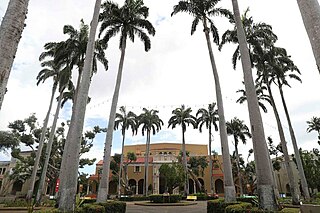
The Quadrangle is the heart and main quadrangle of the University of Puerto Rico, Río Piedras. Together with the Roosevelt Tower, it is listed on the National Register of Historic Places as the University of Puerto Rico Tower and The Quadrangle, for its unique history which represents the union between Puerto Rican architecture with the Jeffersonian Neoclassical style often seen in American universities. It is famous for its lines of Puerto Rican royal palm or palma real and the architecture of its surrounding buildings.
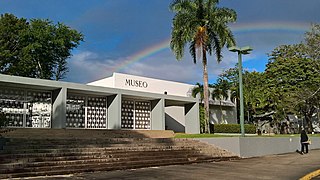
The Museum of History, Anthropology and Art of the University of Puerto Rico — often shortened to Museum of the UPR or MAHA — is a university museum dedicated to anthropology, archaeology and the history of art of Puerto Rico located on the grounds of the University of Puerto Rico, Río Piedras Campus. Officially dating to 1951, this museum is the oldest in Puerto Rico with its first collection being even older dating to 1914, donated by then Resident Commissioner Federico Degetau.